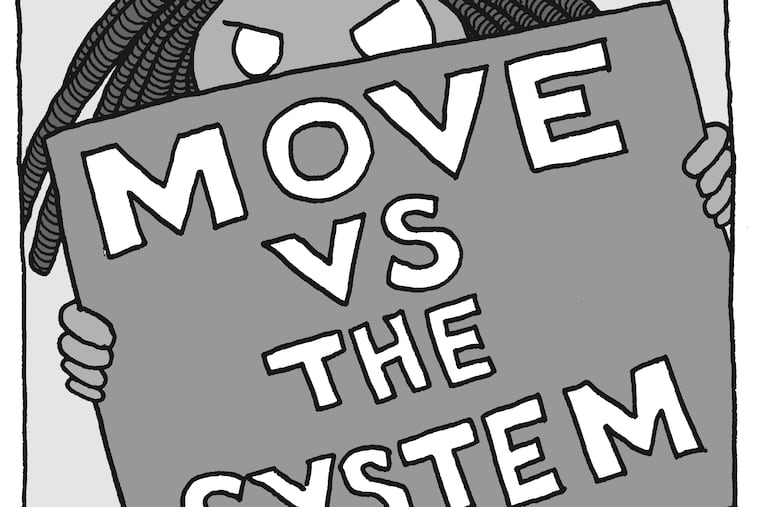Philly art teacher launches comic series to combat misinformation about MOVE.
Peter Coyle, a veteran art teacher from Philadelphia, has turned his focus towards exploring the historical and sociocultural dimensions of the MOVE organization. This radical activist group emerged in the 1970s, advocating for animal rights and anti-racism and is best known for its confrontations with local law enforcement, which culminated in the tragic events of 1985 when Philadelphia police dropped a bomb on their West Philadelphia house, leading to the deaths of eleven members and the destruction of an entire neighborhood.
Over the last forty years, Coyle has immersed himself in research about MOVE, reading extensively from various sources including books, articles, and academic papers. This deep dive into the group’s history and ideology, originally espoused by its founder John Africa (born Vincent Leaphart), has informed his artistic narrative. Coyle has recently launched a webcomic series titled “MOVE VS. The System,” which aims to provide an engaging account of MOVE’s origins, its philosophical foundations, and its confrontations with authorities.
In this webcomic, released in bi-weekly episodes, Coyle’s simplistic but poignant art style encapsulates the organization’s activism and highlights the often-misrepresented relationship it had with the broader community and law enforcement. The first episode revisits a 1972 protest at the Philadelphia Zoo, where MOVE protested animal captivity, underscoring the group’s commitment to both civil rights and animal welfare.
Coyle’s storytelling approach is particularly insightful, as he aims to unify various fragmented accounts and narratives about MOVE into a coherent and comprehensive story. He emphasizes the importance of accurately representing the voices of former members, as well as the ongoing dialogues about their experiences within the organization, particularly regarding the abusive dynamics and cult-like atmosphere that many have described.
Coyle also addresses the challenges presented by misinformation. He recalls instances where popular media, such as a podcast by the Canadian Broadcasting Corporation, propagated inaccuracies about MOVE and its founder. Therefore, his commitment to fact-checking and engaging the community in the creative process is pivotal. Coyle plans to transition his digital series into a physical zine format, gathering contributions and feedback from those with firsthand knowledge of MOVE’s history.
Coyle’s work hopes to counteract long-standing myths surrounding MOVE, ultimately fostering a nuanced understanding of the organization’s impact on Philadelphia’s social fabric. With no predetermined end date for the series, he is dedicated to continuing this important project, illuminating the complex legacy of MOVE for both new and familiar audiences. Readers interested in this exploration of historical activism can visit the webcomic at supertizer.org.







